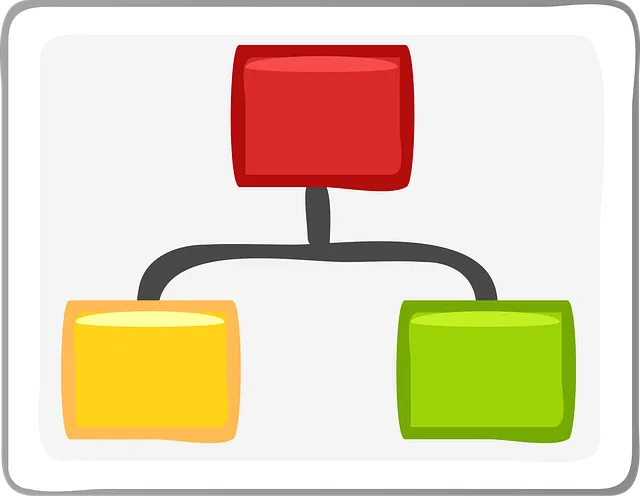The Hierarchy Schema (or Breadcrumb Schema) is a powerful SEO tool using JSON-LD markup to structure website navigation for search engines and users alike. It defines page relationships, aiding large sites with complex categories. By implementing this schema, you improve internal linking, enhance user experience, and boost SEO through rich snippets showing breadcrumb paths. The process involves marking up HTML with specific tags and structured data within `<script type="application/ld+json">`. Effective breadcrumbs guide users and search engines through a clear hierarchy, improving content discoverability and visibility on SERPs. Regular updates and verification are crucial for accuracy. Success is measured through CTRs, keyword rankings, and user interactions monitored by tools like Google Search Console.
Adding breadcrumb schema to your website is a powerful way to enhance internal linking clarity, improve user experience, and boost search engine optimization (SEO) performance. This strategy helps search engines, like Google, understand your site’s hierarchy and structure, resulting in more accurate search results (SERPs). In this comprehensive guide, we’ll explore the benefits of breadcrumb schema, provide a step-by-step implementation process using Hierarchy Schema, share best practices for creating effective paths, discuss technical aspects of markup and verification, and measure the positive impact on your SEO.
- Understanding Breadcrumb Schema: Its Role and Benefits
- Implementing Hierarchy Schema: A Step-by-Step Guide
- Best Practices for Creating Effective Breadcrumb Paths
- Enhancing User Experience with Clear Internal Linking
- Technical Aspects: Markup and Verification
- Measuring Success: Analyzing the Impact on SEO Performance
Understanding Breadcrumb Schema: Its Role and Benefits

Understanding Breadcrumb Schema: Its Role and Benefits
Breadcrumb Schema, also known as Hierarchy Schema, is a powerful tool in search engine optimization (SEO) that enhances the way websites are presented in Search Engine Results Pages (SERPs). It provides a structured representation of a site’s navigation, allowing search engines to understand the relationship between different pages. By implementing Breadcrumb JSON-LD markup for crumbs, websites can offer users and search algorithms a clear overview of their location within the site’s hierarchy. This is particularly beneficial for complex sites with numerous categories and subcategories, ensuring that visitors can easily navigate and find relevant content.
The schema for navigation facilitates better internal linking by showcasing the full path of a page, including its parent and sibling pages. This visual representation in SERPs boosts user experience as it offers context and makes it easier to browse through related content. When search engines interpret the markup correctly, they can display rich snippets with breadcrumb paths, making it more enticing for users to click through to your website’s relevant internal pages.
Implementing Hierarchy Schema: A Step-by-Step Guide

Implementing Hierarchy Schema is a strategic step to enhance your website’s navigation and user experience, which in turn can boost your SEO efforts. This schema allows search engines to better understand the structure of your site, particularly when it comes to categorizing and presenting content within SERPs (Search Engine Results Pages). Here’s a simple breakdown:
1. Identify Categories: Start by defining the main categories or sections of your website. For example, a travel blog might have categories like ‘Destination Guides’, ‘Travel Tips’, and ‘Culture & History’.
2. Assign Hierarchy: Next, establish the hierarchical relationships between these categories. ‘Destination Guides’ could be considered the primary category with ‘Travel Tips’ and ‘Culture & History’ as subcategories. This hierarchy is crucial for the Schema markup.
3. Markup for Crumbs: Utilize the appropriate HTML tags to implement the Hierarchy Schema. Add “ to wrap your JSON-LD (JavaScript Object Notation for Linked Data) code. Define the `ItemList` with each step in the hierarchy, using `itemListElement` and specifying the name of each category.
Best Practices for Creating Effective Breadcrumb Paths

Creating effective breadcrumb paths involves adhering to best practices that enhance user experience and search engine optimization (SEO). Firstly, ensure a clear hierarchy schema where each level logically represents a broader or more specific category of content. This hierarchical structure helps users and search engines alike navigate through your site’s information architecture. Implement these paths using the Breadcrumb JSON-LD format, which provides structured data that can be easily interpreted by search engines like Google.
When structuring your breadcrumb paths, consider starting from the most general category to the specific page. The root or home page should be at the top of the hierarchy, followed by broader categories relevant to the content below. For instance, for a website about travel, the path might look like: Travel > Europe > France > Paris. This hierarchical approach not only guides users but also signals to search engines where your content fits within the site’s structure, thereby improving the Google Breadcrumb Display and enhancing overall SEO for each page.
Enhancing User Experience with Clear Internal Linking

Clear internal linking is a cornerstone of a positive user experience, and incorporating a hierarchy schema, like breadcrumb trails, plays a significant role in achieving this. By implementing SEO breadcrumbs, users can easily navigate websites, understanding their current location and the path to other relevant pages. This hierarchical structure, when properly marked up with markup for crumbs, allows visitors to grasp the site’s organization, making it more intuitive to explore different sections and find desired content.
A well-structured breadcrumb trail not only benefits users but also enhances SEO efforts. Google breadcrumbs display, for instance, can significantly improve a website’s visibility in search engine results pages (SERPs), providing a clearer representation of the site’s information architecture. This visual cue helps both users and search engines comprehend the relationships between pages, leading to better click-through rates and increased engagement.
Technical Aspects: Markup and Verification

Implementing a Breadcrumb JSON-LD schema is a powerful technique to enhance website navigation and improve user experience. This structured data format allows search engines to understand the hierarchy of pages on your site, enabling them to display rich snippets in SERPs, including the breadcrumb path. The markup for crumbs involves embedding specific microdata within HTML, typically using “. Developers can craft a hierarchical schema that represents the relationships between different URL paths, ensuring both accuracy and compliance with search engine guidelines.
Verification is a crucial step to ensure the markup for crumbs functions as intended. Search Console tools, like the Structured Data Testing Tool, can validate the schema’s correctness, identifying potential errors or missing data. Regularly checking and updating these breadcrumbs is essential, especially when navigating changes in website structure. This process guarantees that search engines interpret and display the navigation hierarchy accurately, ultimately benefiting users seeking information across your site’s vast content landscape.
Measuring Success: Analyzing the Impact on SEO Performance

Measuring the success of implementing a breadcrumb schema involves analyzing its impact on SEO performance. One key metric to track is click-through rates (CTRs) from search engine results pages (SERPs). A positive change in CTR indicates that users are finding relevant internal links more easily, enhancing their navigation experience. By using tools like Google Search Console, you can monitor how often your breadcrumb display appears and the subsequent user interactions.
Additionally, examining keyword rankings for targeted keywords within your site’s hierarchy schema is essential. An improvement in ranking for specific pages suggests that search engines are recognizing and understanding the structured data better. This, in turn, leads to more accurate and helpful breadcrumb paths displayed in SERPs, providing users with a clearer overview of their location within the website, thereby increasing the likelihood of conversions or desired actions.
